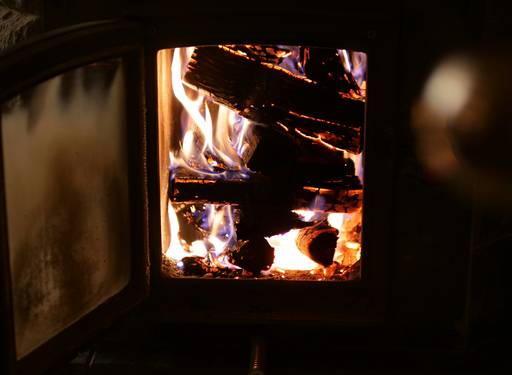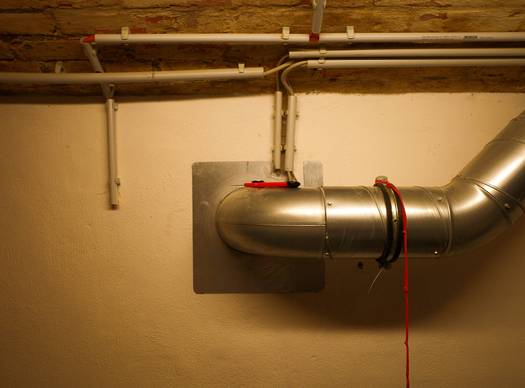
What Is a Gas Heating Stove?
A gas stove is a freestanding or built-in heating appliance that burns natural gas or propane to provide radiant and convective heat for your home. Unlike wood or pellet stoves, gas stoves ignite instantly, offer push-button convenience, and deliver consistent warmth with minimal effort. Most models can operate during power outages (with standing pilot), making them popular for both primary and supplemental heating.
- Fuel: Natural gas (NG) or liquid propane (LP)
- Efficiency: 70–90% (depending on venting and model)
- Ignition: Electronic or standing pilot; many have remote control or thermostat
- Best For: Urban/suburban homes, fast heat, low-maintenance comfort
Types of Gas Stoves
1. Freestanding Gas Stoves
These standalone units resemble traditional wood stoves but are fueled by gas. They offer flexibility in placement, can heat large rooms, and deliver instant ambiance with realistic flames and glowing embers.
- Easy to install with direct venting
- Available in natural gas and propane versions
- Often feature decorative logs and glass viewing windows
2. Gas Stove Inserts
Gas inserts are designed to retrofit existing fireplaces, transforming them into efficient, push-button heaters. They use the chimney for venting and are ideal for upgrading old wood-burning hearths.
- Maximize efficiency of existing fireplaces
- Easy operation and temperature control
- Require professional installation for venting safety
3. Direct Vent vs. Vent-Free Gas Stoves
Direct vent models exhaust combustion gases outside via a sealed pipe. Vent-free (ventless) stoves recirculate heat into the room, but are subject to local code restrictions and require oxygen depletion sensors.
- Direct vent: Safest, best for most homes, highest efficiency
- Vent-free: Higher efficiency but less safe; not allowed in some regions

How Gas Stoves Work
Gas stoves burn natural gas or propane in a controlled chamber, ignited by a pilot or electronic ignition. Airflow is managed for optimal combustion, and heat is radiated through glass panels and circulated by convection. Direct vent stoves draw air from outside and exhaust combustion gases safely outdoors. Many models have blowers to improve heat distribution and remote or thermostat controls for convenience.
- Instant ignition and fast heat output
- Realistic flame effects with ceramic logs and glowing embers
- Thermostatic control for set-and-forget heating
- Minimal ash or residue—no daily cleaning required
Advantages of Gas Stoves
- Convenience: Turn on/off with a switch, remote, or thermostat—no hauling or storing fuel
- Low Maintenance: No ash removal, chimney sweeping, or wood stacking required
- Clean Burning: Minimal emissions compared to wood or coal stoves
- Reliable Heating: Many models work during power outages (with standing pilot)
- Zone Heating: Heat only the rooms you use for energy savings
- Design Flexibility: Wide range of styles—from traditional to modern
- Consistent Output: Set and maintain precise temperature
- Safe Operation: Sealed combustion and automatic safety shutoffs
Gas Stove Installation & Venting

- Must be installed by a licensed professional to ensure code compliance and safety
- Direct vent stoves use a sealed pipe for intake/exhaust—can vent horizontally or vertically
- Vent-free models require no external venting but must meet strict indoor air quality standards
- Requires connection to a natural gas line or propane tank
- Follow manufacturer’s clearances to combustibles and hearth requirements
Gas Stove Operation & Maintenance
- Schedule annual professional inspection for gas leaks, venting, and carbon monoxide safety
- Clean glass panels and decorative logs as needed (follow manufacturer’s instructions)
- Test carbon monoxide detectors regularly
- Check pilot or ignition system at the start of each heating season
- Keep area around stove clear of flammable materials
Comparing Gas Stoves to Other Heating Stoves
| Stove Type | Fuel | Startup | Maintenance | Best For |
|---|---|---|---|---|
| Gas | Natural gas/propane | Instant | Very low | Convenience, urban/suburban, fast heat |
| Wood | Firewood | Manual | Medium–high | Off-grid, rural, ambiance |
| Pellet | Wood pellets | Automated | Low–medium | Eco-friendly, automated heat |
| Electric | Electricity | Instant | Very low | Zone heating, apartments |
| Coal | Coal | Manual | Medium | Long burns, cold climates |
Note: Gas stoves are unmatched for convenience and low maintenance, but require access to a gas supply.
Common Gas Stove Issues & Troubleshooting
1. Stove Won’t Ignite
- Check pilot light or electronic ignition system
- Ensure gas supply valve is open and tank is filled (for propane)
- Replace batteries in remote or thermostat, if equipped
2. Soot or Odors
- Inspect and clean burner ports and decorative logs
- Check venting for blockages or leaks
- Have a professional check for incomplete combustion or gas leaks
Gas Stove FAQs
Related Guides
Types of Heating Stoves
See how gas stoves compare to wood, pellet, electric, and coal models for efficiency and convenience.
Compare TypesStove Fuel Types
Compare natural gas, propane, wood, pellets, and electric for cost and availability.
Fuel ComparisonStove Installation Guide
Understand venting, code requirements, and safe installation for any heating stove.
Read the Guide